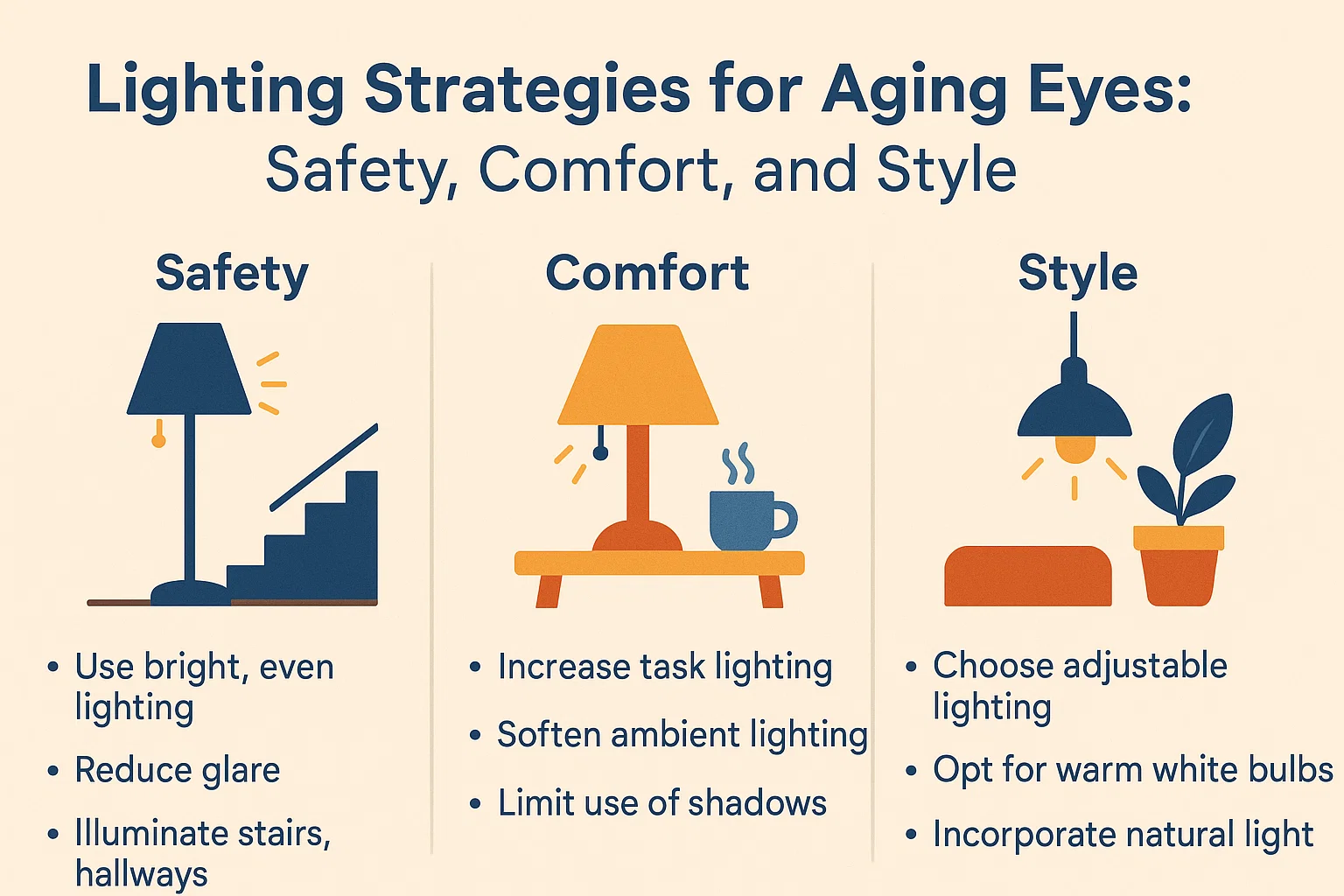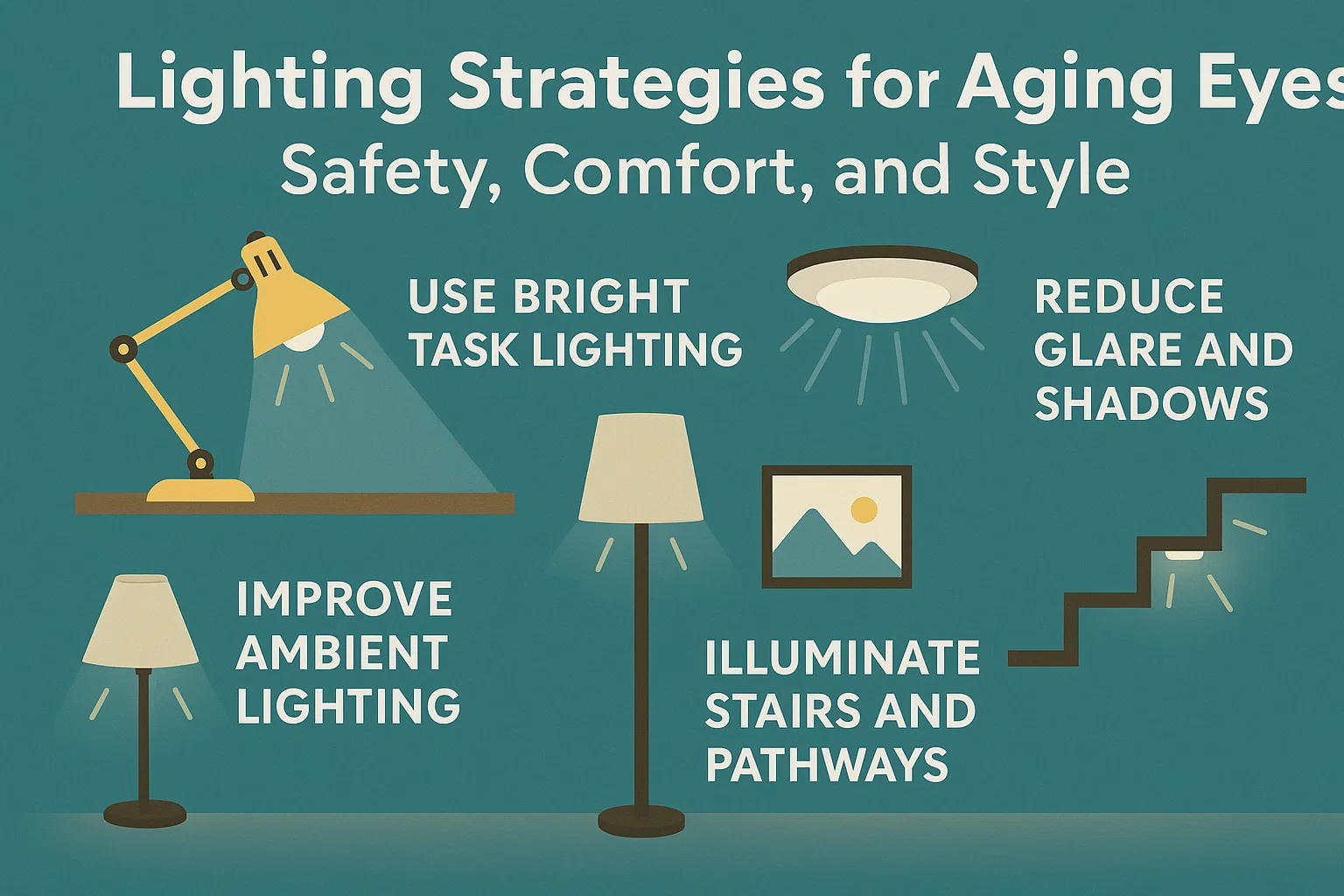Lighting Strategies for Aging Eyes: Safety, Comfort, and Style

Lighting Strategies for Aging Eyes: Safety, Comfort, and Style
Whether you are in the thick of choosing options for your to-be-built home or have recently moved into a newly built home, your attention may be focused on finishes and furnishings more than creating a lighting plan. For many homebuyers, lighting is an afterthought—something they think about only once they start to live in their home. But for older homeowners in particular, lighting is an essential element to preserve safety and security, as well as for enjoying more comfortable vision for daily tasks and hobbies.
“According to the American Lighting Association, after age 60, eye and visual system changes accelerate so that less light reaches the eye and people need more light to see details. It’s important to have ambient light for general illumination, task lighting, and accent illumination for visual appeal, and also to have lights that you can direct.”
Balancing Light and Glare
Older people have more trouble with glare from lighting, such as uncovered chandelier bulbs and recessed lighting, as well as shiny surfaces. Adjustable lights that can be moved or turned off can be helpful, and dimmers provide flexibility to tailor brightness levels. For safety reasons, aging eyes adapt more slowly to changes in brightness, making consistent lighting crucial.
Outdoor Lighting Solutions
A mix of outdoor lights improves safety and security. Pathway lighting and landscape illumination help balance brightness and reduce shadows. LED strips or frosted lenses can minimize glare while ensuring visibility. Key recommendations include:
- Lighting on every step for consistency
- Frosted lenses to soften harsh beams
- LED strips under railings for discreet guidance
Direct and Indirect Lighting Indoors
Indirect ambient lighting, such as cove lighting or concealed fixtures, reduces glare by directing light toward ceilings or walls. Task lighting is equally critical:
- Kitchens: Under-cabinet lights or pendants with wide beam spreads
- Bathrooms: Vertical lighting on both sides of mirrors to eliminate shadows
- Closets and pantries: Bright, direct lighting for reading labels
Safety-Focused Illumination
Transitions between floor levels or materials require special attention. Recommendations include:
- Motion-sensor LED strips under beds for nighttime navigation
- Toe-kick lighting in bathrooms and low lights along stairs
- Consistent illumination at the top and bottom of staircases
LED Innovations for Aging Eyes
LED lighting offers unique advantages for older residents:
- Safety: Minimal heat output and long lifespan reduce burn risks and maintenance
- Color Quality: Opt for warm white temperatures (2700–3000K) and a high color-rendering index (90+ CRI)
- Discreet Placement: Install behind mouldings, in showers, or along railings
“LED light sources are a great solution for aging residents. They produce almost no heat, last for decades, and provide gentle illumination when selected with the right color temperature and CRI.”
Quick Lighting Updates
For budget-friendly improvements:
- Install dimmers on existing fixtures
- Replace traditional switches with glow-in-the-dark versions
- Layer light sources to reduce eye strain and trip risks




